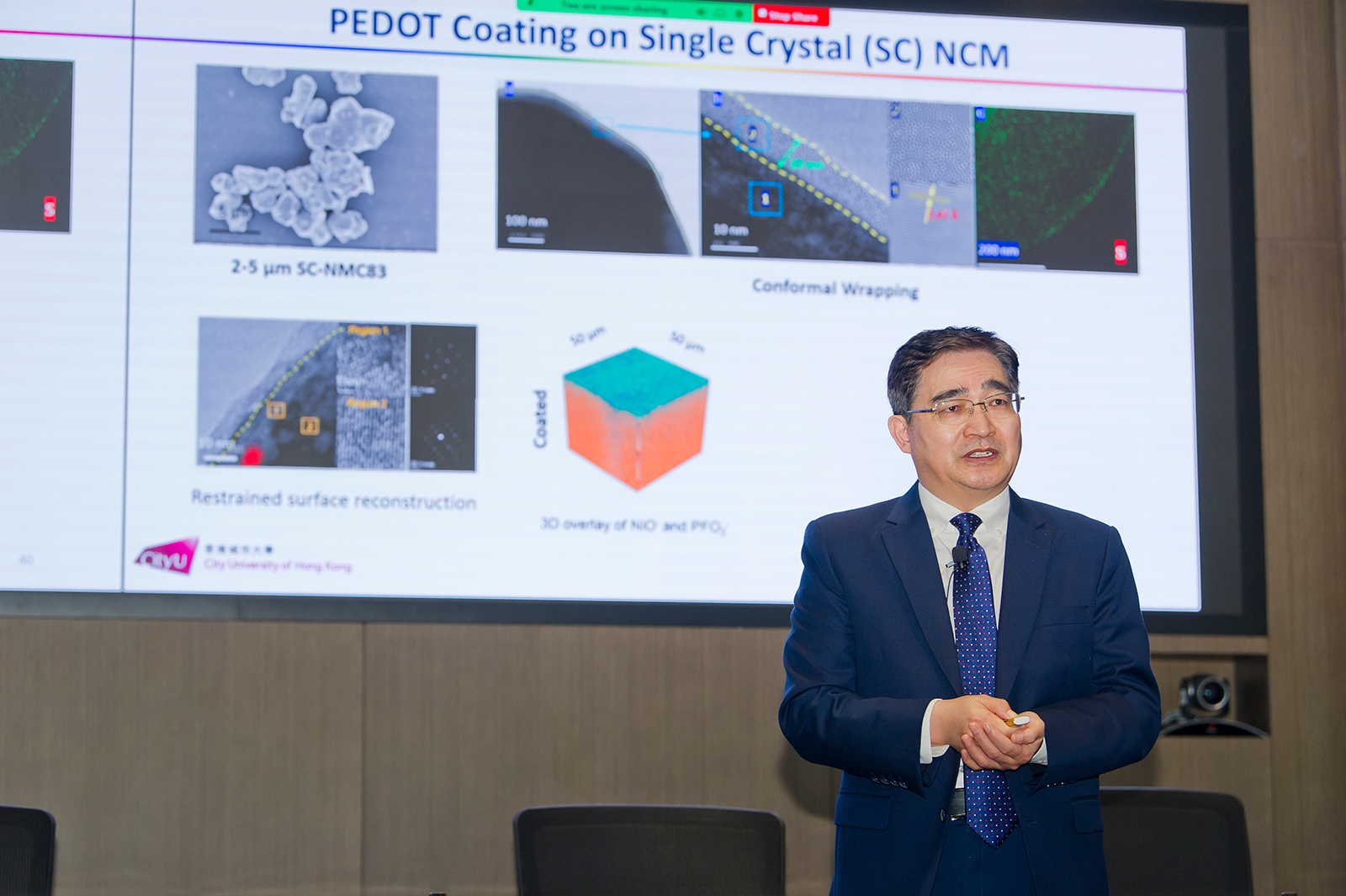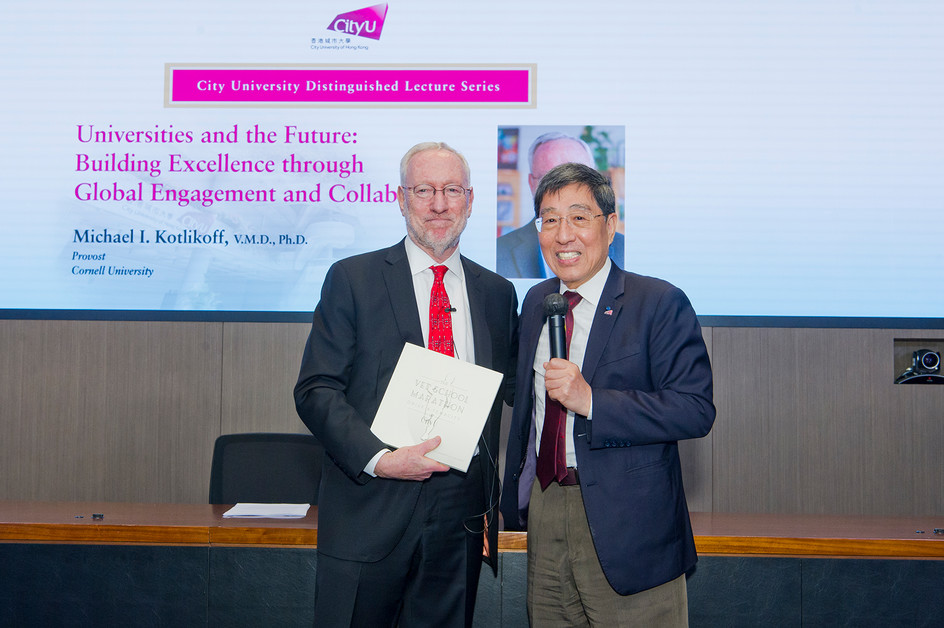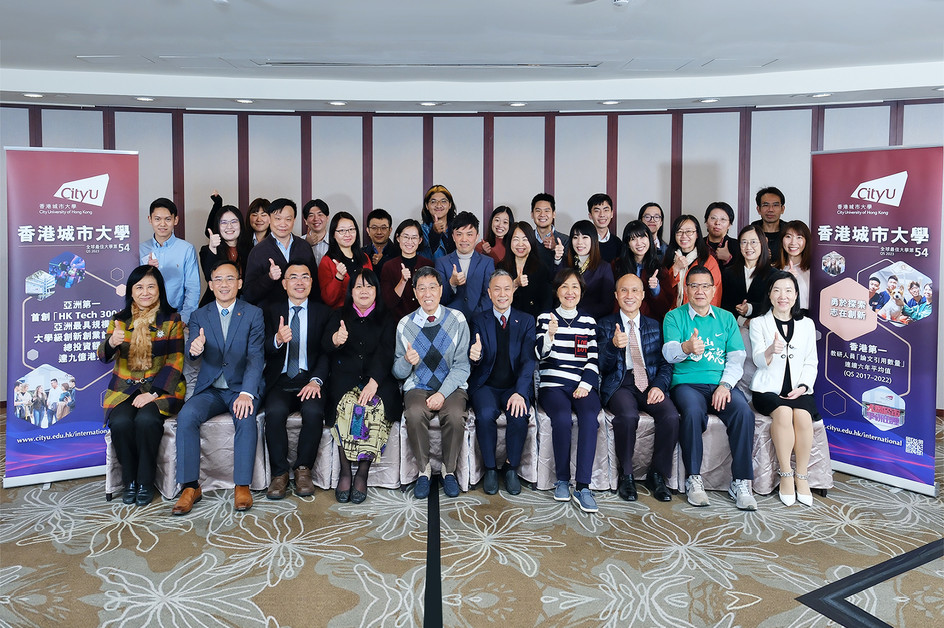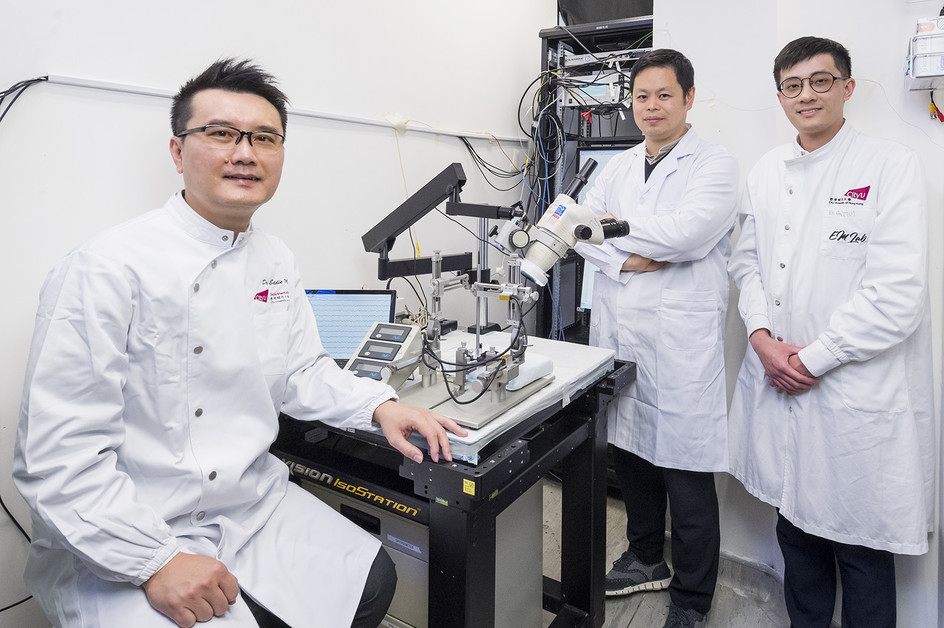

The latest talk in the President’s Lecture Series: Excellence in Academic focused on the research of Professor Chen Guohua, Dean and Chair Professor of Smart Energy Conversion and Storage, School of Energy and Environment, City University of Hong Kong (CityU), on advanced electrode materials using chemical vapour deposition (CVD), a process to create high-quality films and coatings.
His talk, held on 8 February, explored diamond film fabricated on titanium substrate, functional polymeric materials created at MIT, and the coating of a skin layer made of conductive polymers on cathode materials for lithium-ion batteries.
In the first part of this address, he talked about creating a highly effective anode for the electro-oxidation of pollutants in water, i.e., using an anode to decompose organic pollutants in wastewater. In part two, he discussed building a reactive interface for the CVD of functional polymers during his sabbatical at MIT in 2005. In part three, he presented research into the use of CVD for energy storage.
“Energy storage is a huge area of research and business growth. The energy storage business is likely to top US$20,000 billion over the next 40 years,” Professor Chen said.
He explained that, despite their relatively high capacity, layered lithium transition metal oxides suffer from crystal and interfacial structural instability under aggressive electrochemical and thermal driving forces, leading to rapid performance degradation and severe safety concerns.
However, CVD techniques can be used to build a protective conductive polymer skin on layered oxide cathode materials, which facilitates the transport of lithium ions and electrons, significantly suppresses the undesired layered to spinel/rock-salt phase transformation and the associated oxygen loss, mitigates intergranular and intragranular mechanical cracking, and effectively stabilises the cathode-electrolyte interface.
“This approach enhances the capacity and thermal stability under high-voltage operation,” he said, adding that a protective skin at both secondary and primary particle levels of layered oxides can help build high-energy, long-life and safe lithium-ion batteries.
Professor Chan concluded his talk by saying that CVD is a versatile technology; it has proven feasible for growing diamond film; it can provide a thin interface with a functional group(s); it can be applied to many fields; and the technology is now available at CityU.





